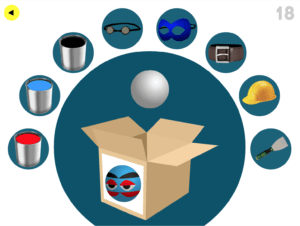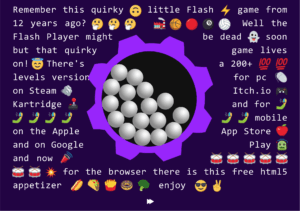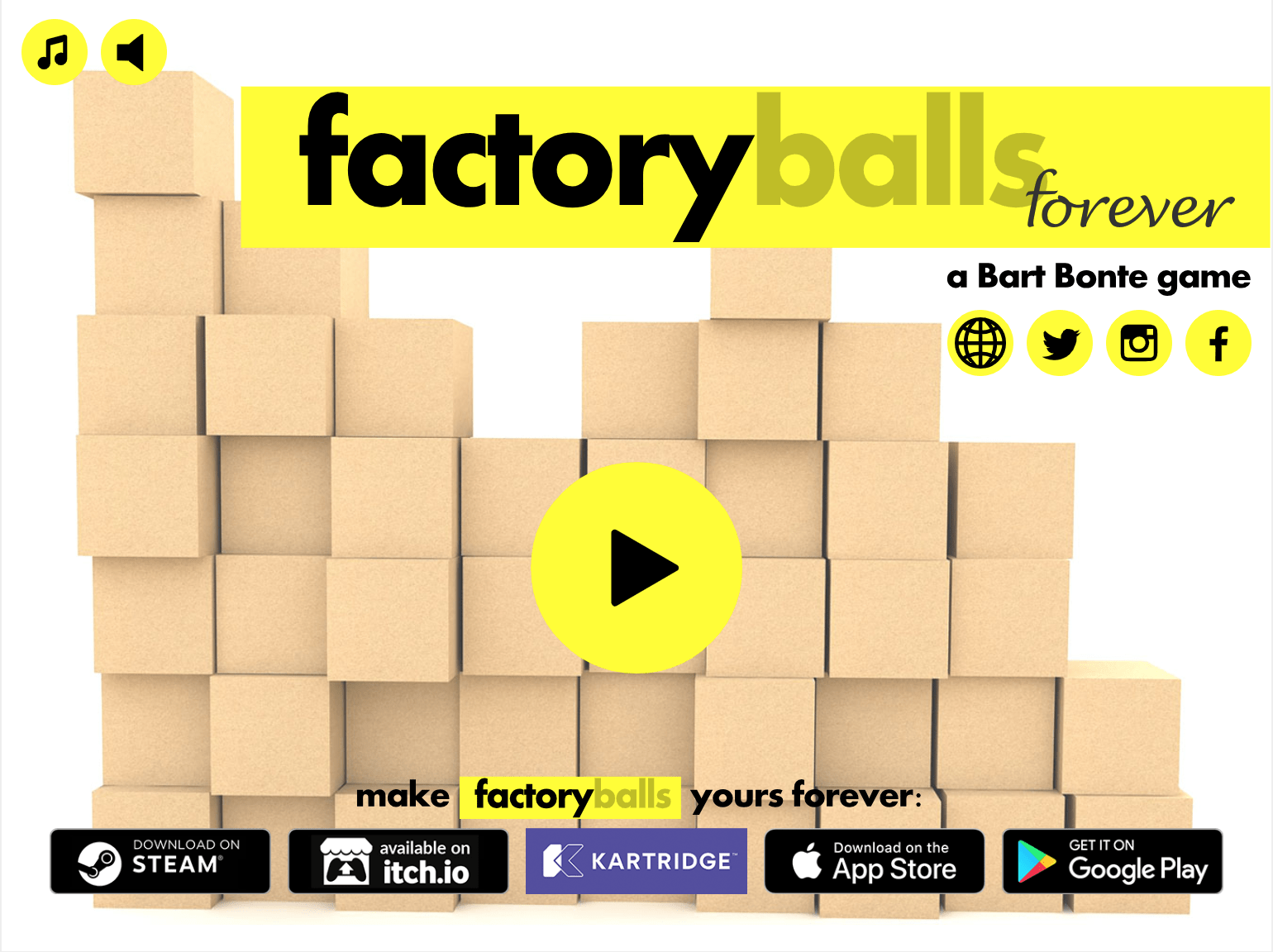This week, I sat down to play Factory Balls, a 2008 Bart Bonte game for all ages where the player must take a blank sphere and color it with a certain pattern. In the beginning, the patterns are simple, with very few tools for masking and coloring. However, as the game progresses and the difficulty ramps up, players are challenged to make complex patterns using a large variety of tools and colors. The game is available on mobile, Steam, and web browsers as a 25-level preview (which is where I played it). As I worked to complete the puzzles, making use of the charmingly simple UI to mask and color in the spheres, I was surprised at how deep I got into the game without seeing a single instruction. This quality is the game’s greatest strength; Factory Balls’ puzzle mechanics are simple but constantly changing, leading to a game experience where the player is incentivized to experiment and iterate rather than being handed the rules.
In designing a game, there is typically a tradeoff between simplicity and replayability. On one hand, making the mechanics of a puzzle simple helps ensure that new players will pick up the game relatively quickly. At the same time, simple mechanics may make a game too repetitive or boring for more experienced players to pick up the game again. Factory Balls balances these two effectively, building up difficulty with new masking tools that combine to create very distinct patterns. Crucially, while each level seems challenging at first, they are all solvable within several minutes, which goes towards the definition of puzzles we heard in class (namely, that the odds are stacked against the player but they can win within a reasonable time frame).




The game starts off fairly simple, but scales up in complexity (number and type of paints/masks).
Furthermore, since the exact order of the inputs are not particularly memorable, the game promotes a dynamic of trial and error for novices and veterans alike, ultimately leading to an aesthetic of challenge. For example, I started off by playing to level 18, and then set the game down to take a break. Later, I came back to the game and replayed from level 1. Even though I had a much more concrete understanding of the game’s mechanics, I still experimented with trial and error, making the puzzles just as challenging and fun as they were on my first run.
To be sure, some could argue that the visual design of the game is slightly lacking. After all, since Factory Balls is a painting game, it could capitalize on this artistic aspect (much like Color By Numbers), to cultivate an aesthetic of sensation as well. If the game had a slightly more consistent or artistic UI, it could easily be just as satisfying as it is challenging to complete the puzzles. At the same time, I happen to enjoy the visual design of the game, as it reminds me of old flash player games from childhood (probably because it originally was one). In this way, it also capitalizes on this design style to create a nostalgic gaming experience reminiscent of the early 2000s.

Factory Balls was originally created as a flash player game.
Overall, Factory Balls demonstrates that simplicity and replayability can go hand in hand, using novel mechanics to keep the player experimenting and trying out different tools to see what works. The game requires no instruction, and yet is able to continuously bump up the complexity and difficulty of its puzzles so as to not lose the interest of the player. The end result is a very gaming experience which is bound to challenge its players from start to finish in a satisfying way.




